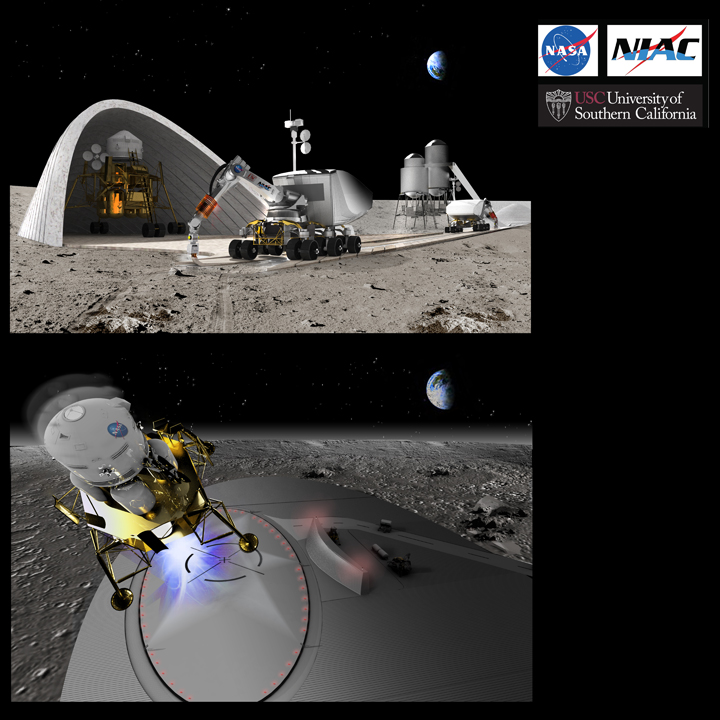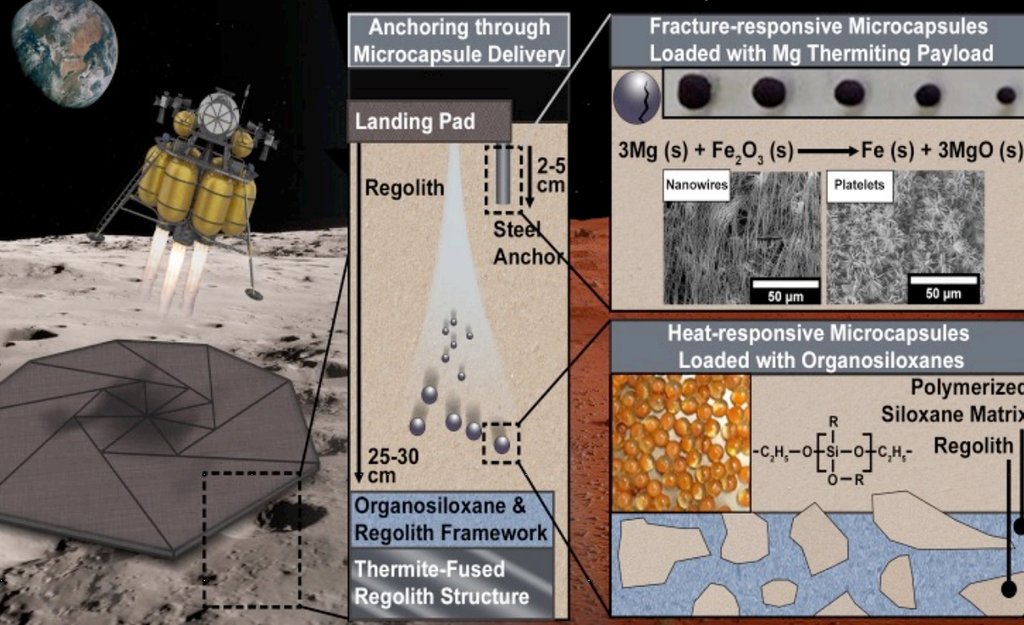NASA Invests in a Plan to Build Landing Pads and Other Structures on the Moon out of Regolith
By Andy Tomaswick
Materials are a crucial yet underappreciated component of any space exploration program. Without novel materials and ways to make them, things that are commonplace today, such as a Falcon 9 rocket or the Mars rovers, would never have been possible. As humanity expands into the solar system, it will need to make more use of the materials found there – a process commonly called in-situ resource utilization (ISRU). Now, the advanced concepts team at NASA has taken a step towards supporting that process by supporting a proposal from Dr. Sarbajit Banerjee, a chemist at Texas A&M. The proposal suggests using lunar regolith to build a stable landing pad for future moon missions.
The proposal, entitled Regolith Adaptive Modification System (RAMs) to Support Early Extraterrestrial Planetary Landings (and Operations), focuses on providing early-stage infrastructure that would be useful before larger infrastructure such as sintering or geopolymerization equipment can be put in place.
Alternatively, RAMs uses a novel anchoring technique centered around “precursors” that can weld anchor points on the surface to the underlying regolith. Other precursors can be directly introduced into the regolith itself to stabilize certain regions directly.
The precursors are made up of a combination of nanothermites and organosilanes. When heated, they blend together with the surrounding regolith to create much more stable structures. Interesting, the source of much of the energy needed to create the bonds that stabilize the material is actually pulled from the material itself.
Credit: University of Missouri Engineering YouTube Channel
There are other advantages to this system, including its ability to bond dissimilar materials. It would allow flexible landing pads flown down to the surface to be anchored directly to the regolith with minimal effort, ensuring that they won’t simply blow away the first time they are hit with a booster engine blast.
There are still plenty of hurdles to go before this system is set up on the moon. It is one of 16 Phase 1 selectees for the NASA Institute for Advanced Concepts (NIAC) Fellowship, which hopes to further flesh out advanced missions concepts ranging from a “Pony Express” for the solar system to autonomous deep drilling rigs. RAMs itself has pedigree in a previous NIAC program that focused on developing the flexible platforms themselves rather than the technique to anchor them to the ground.

Credit: NASA / University of Southern California
Though still in its early stages, the idea behind the RAMs concept could have large potential impacts on the early stages of humanity’s exploration not only on the moon but also other bodies in the solar system. As NIAC continues to support these efforts, they might some day get to see the light of day on a different world.
Learn More:
NASA – Regolith Adaptive Modification System (RAMs) to Support Early Extraterrestrial Planetary Landings (and Operations)
SpaceRef: 2021 NIAC Phase I Fellows
The Space Resource: How Will We Handle Lunar Dust Without Landing Pads?
Lead Image:
Graphical description of the RAMs project.
Credit: Sarbajit Banerjee
The post NASA Invests in a Plan to Build Landing Pads and Other Structures on the Moon out of Regolith appeared first on Universe Today.

March 4, 2021 at 08:02PM
via Universe Today read more...

Post a Comment